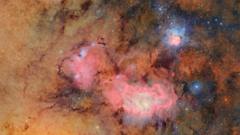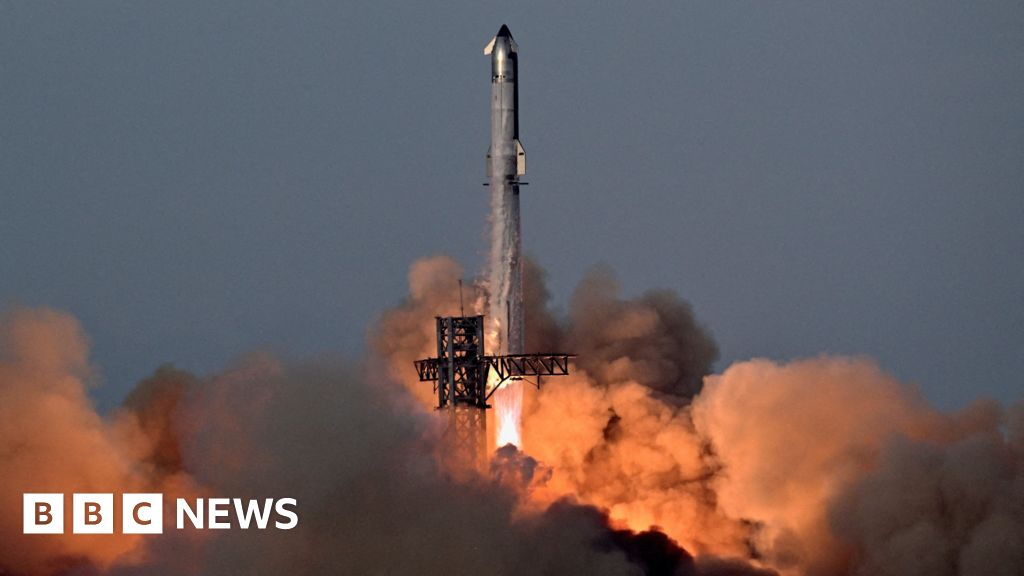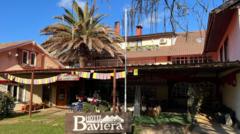The Vera Rubin Observatory, perched atop a mountain in the Chilean Andes, has unveiled its first celestial images, showcasing its immense potential to explore the dark recesses of the universe. The initial photograph highlights the stunning Trifid and Lagoon nebulae, luminous clouds of gas and dust swirling in a star-forming region approximately 9,000 light years from our planet. This telescope, equipped with the world's most advanced digital camera, is anticipated to revolutionize our comprehension of cosmic phenomena.
Scientific experts assert that, in its inaugural year, the Vera Rubin Observatory could uncover a ninth planet in our solar system and detect hazardous asteroids nearing Earth while also cataloging the Milky Way's structure. This ambitious 10-year survey—a historic milestone for astronomy—aims to resolve pivotal questions surrounding dark matter, which constitutes a significant portion of our universe.
Professor Catherine Heymans, an esteemed astronomer involved in the project, reflected on the long journey leading to this breakthrough, stating, “I personally have been working towards this point for about 25 years.” The United Kingdom hosts pivotal data centers for data processing, emphasizing the collaborative global effort behind this astronomical endeavor.
Situated at an optimal altitude for clear skies, the observatory maintains its remote location's darkness with stringently controlled lighting to ensure accurate astronomical observations. The remarkable design of the telescope employs a unique three-mirror design capable of capturing light with exceptional clarity over vast distances.
Elana Urbach, commissioning scientist, expresses excitement over the telescope's aims, noting its capability to capture faint galaxies and supernovae from billions of years ago with unprecedented clarity. Vera Rubin's advanced 3,200-megapixel camera, engineered by the SLAC National Accelerator Laboratory, is integral to this pursuit of sharper images and finer details.
With the capacity to capture the night sky every 40 seconds for a decade, the observatory is set to amass an unparalleled dataset, peaking at around 10 million alerts nightly for over 4,000 square degrees of sky. This continuous monitoring will enable scientists to detect transient cosmic events, enhance understanding of the Milky Way's formation, and shed light on the mysteries of dark matter.
Professor Alis Deason from Durham University underscores the transformative nature of the data collected, which will propel research for years. Current observations reach back to about 163,000 light-years, while the Vera Rubin is expected to see far beyond—up to 1.2 million light-years—unearthing insights into the Milky Way's stellar halo and its faint satellite galaxies.
The observatory's powerful capabilities may finally address long-standing questions about the existence of Planet Nine, potentially seated far beyond the orbits of known planets. As Alicia Deason aptly puts it: “It's gonna take us a long time to really understand how this new beautiful observatory works. But I am so ready for it.” The Vera Rubin Observatory heralds a new epoch in our exploration of the cosmos, illuminating the darkness with every new discovery.
Scientific experts assert that, in its inaugural year, the Vera Rubin Observatory could uncover a ninth planet in our solar system and detect hazardous asteroids nearing Earth while also cataloging the Milky Way's structure. This ambitious 10-year survey—a historic milestone for astronomy—aims to resolve pivotal questions surrounding dark matter, which constitutes a significant portion of our universe.
Professor Catherine Heymans, an esteemed astronomer involved in the project, reflected on the long journey leading to this breakthrough, stating, “I personally have been working towards this point for about 25 years.” The United Kingdom hosts pivotal data centers for data processing, emphasizing the collaborative global effort behind this astronomical endeavor.
Situated at an optimal altitude for clear skies, the observatory maintains its remote location's darkness with stringently controlled lighting to ensure accurate astronomical observations. The remarkable design of the telescope employs a unique three-mirror design capable of capturing light with exceptional clarity over vast distances.
Elana Urbach, commissioning scientist, expresses excitement over the telescope's aims, noting its capability to capture faint galaxies and supernovae from billions of years ago with unprecedented clarity. Vera Rubin's advanced 3,200-megapixel camera, engineered by the SLAC National Accelerator Laboratory, is integral to this pursuit of sharper images and finer details.
With the capacity to capture the night sky every 40 seconds for a decade, the observatory is set to amass an unparalleled dataset, peaking at around 10 million alerts nightly for over 4,000 square degrees of sky. This continuous monitoring will enable scientists to detect transient cosmic events, enhance understanding of the Milky Way's formation, and shed light on the mysteries of dark matter.
Professor Alis Deason from Durham University underscores the transformative nature of the data collected, which will propel research for years. Current observations reach back to about 163,000 light-years, while the Vera Rubin is expected to see far beyond—up to 1.2 million light-years—unearthing insights into the Milky Way's stellar halo and its faint satellite galaxies.
The observatory's powerful capabilities may finally address long-standing questions about the existence of Planet Nine, potentially seated far beyond the orbits of known planets. As Alicia Deason aptly puts it: “It's gonna take us a long time to really understand how this new beautiful observatory works. But I am so ready for it.” The Vera Rubin Observatory heralds a new epoch in our exploration of the cosmos, illuminating the darkness with every new discovery.



















